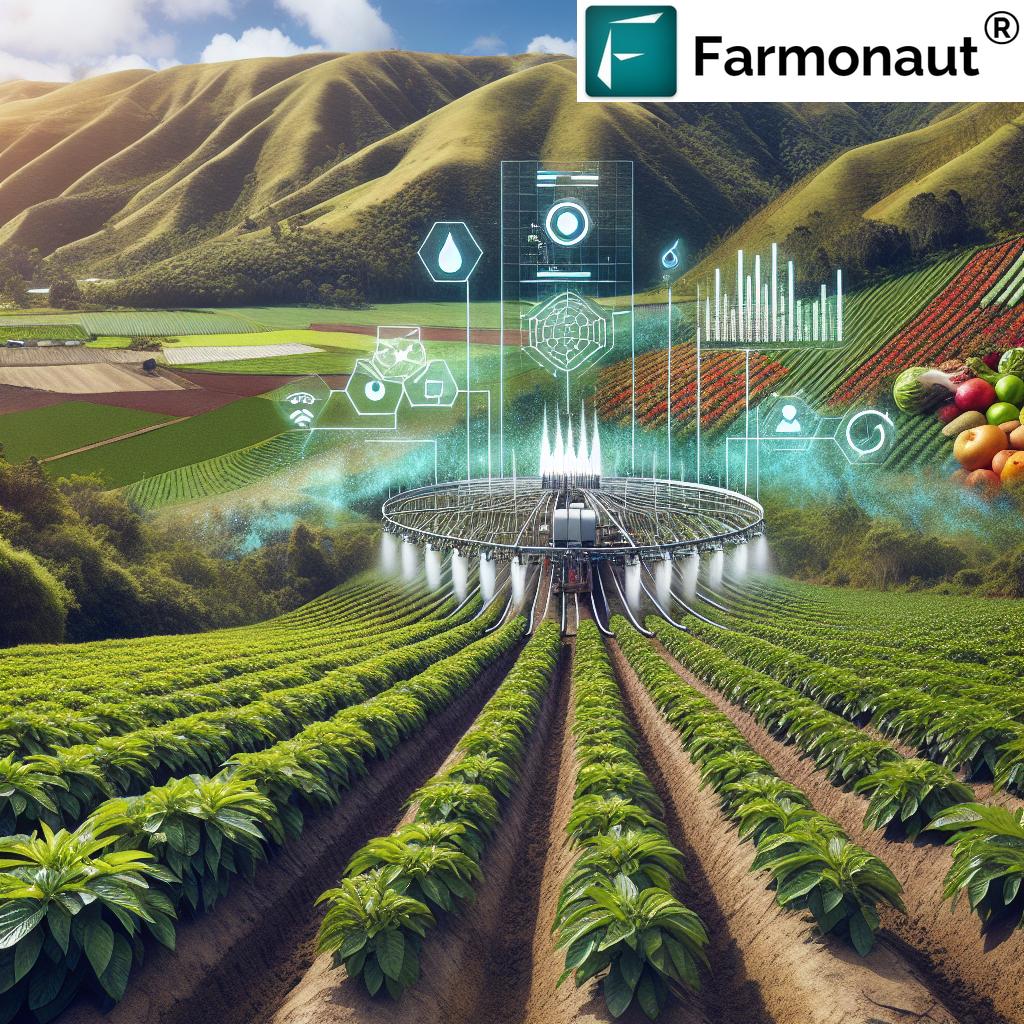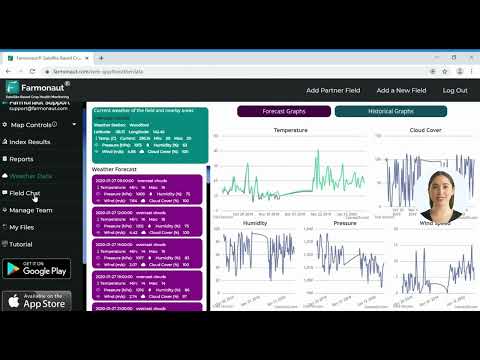Revolutionizing South American Agriculture: How Precision Farming and Secondary Macronutrients Boost Crop Yields
“South America leads global growth in secondary macronutrients, with the market projected to reach $48.5 billion by 2028.”
In the ever-evolving landscape of agriculture, we’re witnessing a remarkable transformation in South America. The convergence of precision farming techniques and the strategic use of secondary macronutrients is reshaping the agricultural sector, promising unprecedented growth and sustainability. As we delve into this revolution, we’ll explore how these advancements are not just boosting crop yields but also paving the way for a more resilient and productive agricultural future.
The Rising Tide of Secondary Macronutrients
The global secondary macronutrients market is on an impressive trajectory, with projections indicating a surge to $48.5 billion by 2028. This growth reflects a compound annual growth rate (CAGR) of 4.0% from 2023 to 2028, signaling a significant shift in agricultural practices and priorities. But what’s driving this remarkable expansion?
- Increasing soil nutrient deficiencies
- Expansion of cultivated areas for high-value crops
- Advancements in precision agriculture techniques
- Growing demand for fruits and vegetables
These factors collectively contribute to the burgeoning market for secondary macronutrients, with South America emerging as the fastest-growing region in this global trend.

Precision Agriculture: The Game-Changer
At the heart of this agricultural revolution lies precision farming. This innovative approach leverages technology to optimize nutrient and water management in crop root zones. By minimizing nutrient leaching and accumulation, precision agriculture significantly enhances fertilizer efficiency.
We’re seeing a paradigm shift in how farmers approach crop management. With the integration of secondary nutrient data into fertigation systems, farmers can now apply precise amounts of nutrients at optimal times, resulting in reduced costs and improved yields.
Farmonaut, a pioneering agricultural technology company, is at the forefront of this revolution. Through its satellite-based crop monitoring system, Farmonaut provides farmers with real-time insights into crop health, enabling them to make data-driven decisions about nutrient application. Explore Farmonaut’s Web App to see how precision agriculture can transform your farming practices.
South America: The Epicenter of Growth
South America is poised to become the fastest-growing region in the secondary macronutrients market. The continent’s robust agricultural sector, which plays a pivotal role in its economy, is embracing these innovative farming practices with open arms.
- Increasing availability of secondary macronutrient fertilizers
- Growing affordability making adoption easier for farmers
- Stringent international quality standards driving uptake
The region’s agricultural exports must adhere to strict international quality standards, further propelling the adoption of secondary macronutrients to enhance soil quality and crop health.
Fruits and Vegetables: Leading the Charge
In the diverse landscape of crop segments, fruits and vegetables are emerging as the fastest-growing category. This surge is attributed to several factors:
- Rising trends in veganism and vegetarianism
- Increasing consumer focus on health-conscious diets
- Growing demand for plant-based foods
These trends are not just reshaping dietary habits but are also having a profound impact on agricultural practices. Farmers are increasingly turning to secondary macronutrients to meet the nutritional demands of these high-value crops.

“Calcium emerges as the fastest-growing nutrient in precision agriculture, driving a 4.0% CAGR from 2023 to 2028.”
Calcium: The Star Performer
Among the secondary macronutrients, calcium is shining bright as the fastest-growing segment. Its critical role in maximizing crop productivity cannot be overstated:
- Facilitates root growth
- Enhances flower and seed production
- Boosts plant resistance against pests and diseases
Crops like sugarcane, rice, and various fruits and vegetables benefit significantly from calcium supplementation. This underscores the nutrient’s importance in the evolving agricultural landscape.
Farmonaut’s satellite-based crop monitoring system plays a crucial role in optimizing calcium application. By providing real-time data on crop health and soil conditions, Farmonaut enables farmers to make informed decisions about when and how much calcium to apply. Download Farmonaut’s Android App to start monitoring your crops effectively.
Liquid Fertilizers: The Future of Nutrient Application
In the realm of secondary macronutrients, liquid formulations are gaining significant traction. Their popularity stems from several advantages:
- Versatility in application methods (foliar sprays, fertigation, soil drenches)
- Easy mixing with water and other fertilizers
- Uniform nutrient distribution across fields
These benefits translate to consistent crop health and improved yield outcomes, making liquid fertilizers an increasingly attractive option for farmers.
The Role of Technology in Precision Nutrient Management
As we navigate this agricultural revolution, technology plays an indispensable role. Farmonaut’s innovative solutions are at the forefront of this technological integration:
- Satellite-based crop health monitoring
- AI-powered advisory systems
- Blockchain-based traceability solutions
These technologies empower farmers to make data-driven decisions, optimize resource use, and enhance overall farm productivity. Get Farmonaut’s iOS App to leverage these cutting-edge technologies in your farming operations.
Market Insights: A Comparative Analysis
To better understand the growth trajectory of the secondary macronutrients market in South America, let’s examine a comparative analysis:
| Nutrient Type | Market Value 2023 (USD Billions) | Projected Market Value 2028 (USD Billions) | CAGR (%) | Key Driving Factors |
|---|---|---|---|---|
| Calcium | 5.2 | 6.8 | 5.5 | Increasing demand in fruit and vegetable cultivation |
| Magnesium | 4.8 | 6.1 | 4.9 | Rising awareness of magnesium’s role in chlorophyll production |
| Sulfur | 4.5 | 5.6 | 4.5 | Growing importance in oilseed crops |
| Total | 14.5 | 18.5 | 5.0 | Precision agriculture adoption, soil nutrient deficiencies |
This table illustrates the robust growth projected across all secondary macronutrients, with calcium leading the pack. The overall market expansion underscores the increasing recognition of these nutrients’ importance in modern agriculture.
Challenges and Opportunities
While the growth prospects are promising, the secondary macronutrients market in South America faces some challenges:
- Lack of awareness among small-scale farmers
- Initial investment costs for precision agriculture technologies
- Variability in soil types and climatic conditions across the region
However, these challenges also present opportunities for innovation and education. Companies like Farmonaut are addressing these issues by:
- Providing affordable precision agriculture solutions
- Offering educational resources and support to farmers
- Developing region-specific nutrient management strategies
By leveraging Farmonaut’s API, developers and agribusinesses can integrate advanced crop monitoring capabilities into their own systems, further democratizing access to precision agriculture technologies.
The Future of South American Agriculture
As we look to the future, the integration of secondary macronutrients and precision farming techniques promises to revolutionize South American agriculture. We anticipate:
- Increased adoption of precision agriculture across farm sizes
- Growing emphasis on sustainable farming practices
- Continued innovation in nutrient management technologies
- Stronger integration of data analytics in farm decision-making
These trends will not only boost crop yields but also contribute to more sustainable and resilient agricultural systems across the continent.
Empowering Farmers with Farmonaut
In this evolving agricultural landscape, Farmonaut stands as a crucial ally for farmers. Our satellite-based crop monitoring system provides invaluable insights for optimal nutrient management:
- Real-time crop health monitoring
- AI-powered advisory for precision nutrient application
- Integration with fertigation systems for automated nutrient management
By leveraging these technologies, farmers can optimize their use of secondary macronutrients, leading to improved yields and reduced environmental impact.
Explore Farmonaut’s solutions:
Conclusion
The revolution in South American agriculture, driven by the strategic use of secondary macronutrients and precision farming techniques, is well underway. As the market continues to grow and evolve, farmers who embrace these innovations stand to gain significantly in terms of crop yields, sustainability, and profitability.
By leveraging advanced technologies like those offered by Farmonaut, farmers can navigate this new agricultural landscape with confidence. The future of South American agriculture is bright, promising not just increased productivity but also a more sustainable and resilient food production system for generations to come.
FAQ Section
Q: What are secondary macronutrients in agriculture?
A: Secondary macronutrients are essential plant nutrients required in relatively large quantities, but less than primary macronutrients (NPK). They include calcium, magnesium, and sulfur.
Q: How does precision agriculture contribute to better nutrient management?
A: Precision agriculture uses technology to provide site-specific nutrient management, optimizing water and nutrient maintenance in crop root zones. This leads to more efficient fertilizer use and improved crop yields.
Q: Why is South America emerging as a key market for secondary macronutrients?
A: South America’s robust agricultural sector, increasing availability of secondary macronutrient fertilizers, and the need to meet international quality standards for exports are driving market growth in the region.
Q: How can Farmonaut’s technology help in secondary macronutrient management?
A: Farmonaut’s satellite-based crop monitoring system provides real-time data on crop health and soil conditions, enabling farmers to make informed decisions about nutrient application, including secondary macronutrients.
Q: What are the benefits of using liquid fertilizers for secondary macronutrients?
A: Liquid fertilizers offer versatility in application methods, easy mixing with water and other fertilizers, and ensure uniform nutrient distribution across fields, leading to consistent crop health and improved yields.
Earn With Farmonaut: Affiliate Program
Earn 20% recurring commission with Farmonaut’s affiliate program by sharing your promo code and helping farmers save 10%. Onboard 10 Elite farmers monthly to earn a minimum of $148,000 annually—start now and grow your income!
For more information on how to leverage Farmonaut’s technology in your farming operations, visit our API Developer Docs.





















